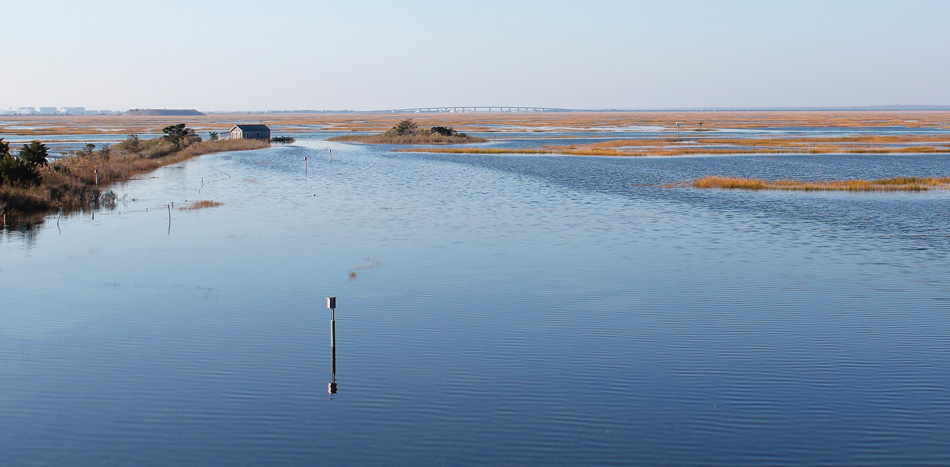by Dr. Lenore Tedesco, Executive Director & Elizabeth Hefner, Development Team
Coastal marshes, tidal creeks, and bays are cradles of life. They host a phenomenal diversity of wildlife, including the beloved diamondback terrapin and majestic Osprey. They are nursery grounds for fish and shellfish and crucial to coastal resiliency, offering protection against damage from storm surge and flooding. They are the foundation of a complex web that sustains the coastal way of life.
The marshes that dominate the back bays of Seven Mile Island are tidal; tides flood portions of them twice a day, every day. Other portions of the marshes flood only during higher-than-average tides that come with the full and new moons, while the highest ground is flooded only by storm-driven tides. Each year, marshes build elevation through natural processes, helping them keep ahead of historically gradual changes in sea level. As sea level rise accelerates, this pattern is breaking. Tides flood more of the marsh every year; over the last few years, the change has been dramatic.
Tidal marshes flourish on the brink – normal daily flooding brings life; repetitive deep flooding systematically damages them. When sea level rises faster than the marsh surface can build, marshes fail, degrading into mudflats or open water. We see this happening to the marshes around the Institute. What were lush meadows only a few years ago are becoming mudflats right before our eyes.
Following in the footsteps of our founder, Herbert Mills, we are taking action. With thoughtful and strategic planning, we can bring our marshes back to life. Institute scientists, along with our colleagues from the US Army Corps of Engineers, NJ Department of Environmental Protection, and several universities, are monitoring these marshes and designing and piloting innovative strategies to reduce the impacts of sea level rise and restore marshes to vibrancy and health.
Thank you for your continued support, which makes this work possible. Together, we can ensure that these marshes are here for generations to come.

